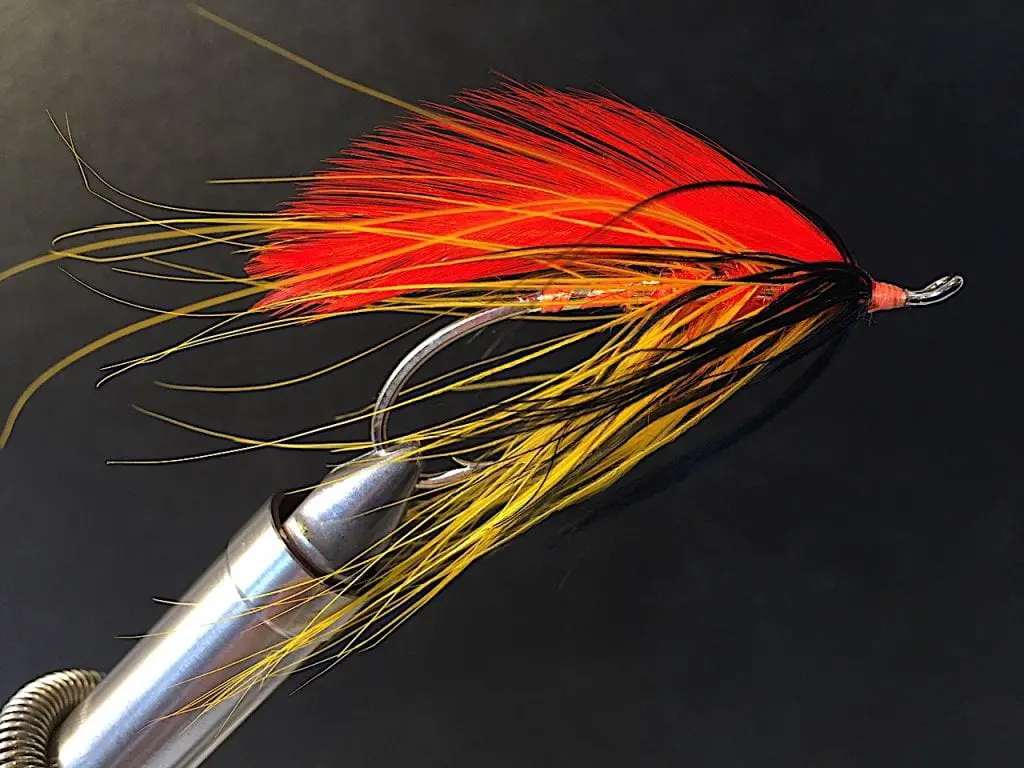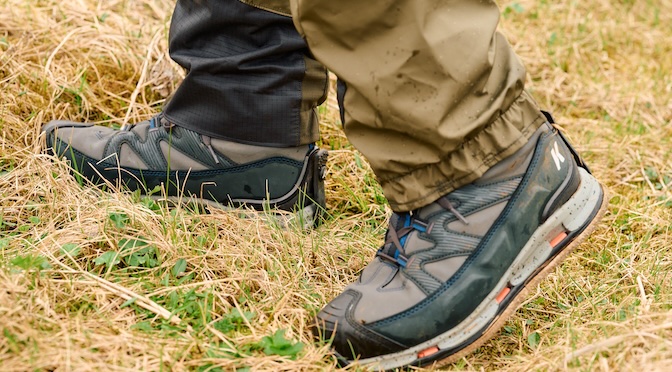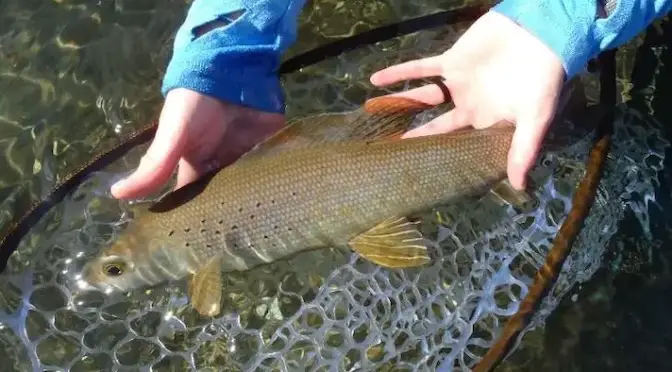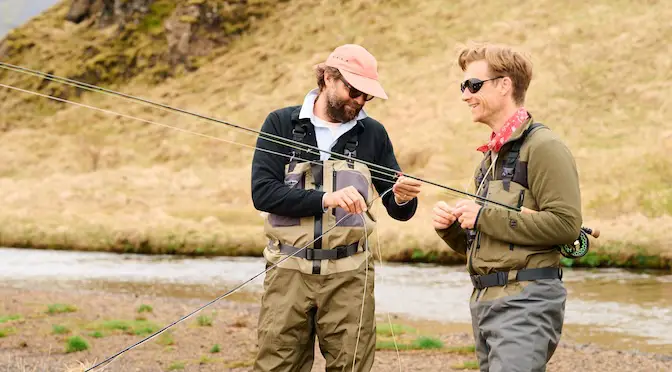Last updated on January 10th, 2024.
- Fly Fishing Steelhead: A How To Guide - February 17, 2023
- Brown Trout in the Outer Hebrides – South Uist Fishing - July 19, 2022
- Fishing Camp – Looking for Kamloops Trout - December 26, 2019
Spey flies originated in the 1800’s on the salmon rivers of Northern Scotland. Nowadays they make for great steelhead fly patterns.
Spey flies originated in the 1800’s on the salmon rivers of Northern Scotland. They were simple, somber patterns which used materials easily obtained on a Scottish farm: wool bodies, long mobile barnyard scotch hackle and short mallard wings. Francis Francis described three spey patterns in his 1867 A Book On Angling. Andrew Knox described 16 patterns in his 1872 book Autumns on the Spey. T.E. Pryce-Tannatt gave detailed instructions on how to tie spey flies in his 1914 book How To Dress Salmon Flies.
Keep the body thin and short and the body hackle long and mobile. Dress the wing to “produce a sort of hump-backed effect, which looks rather wicked.” In the decades after Pryce-Tannatt’s book, spey flies fell out of fashion in Scotland, displaced first by the gaudy intricate salmon flies tied with materials from the far ends of the British Empire and then by hairwings and tube flies.
Spey Flies as Steelhead Fly Patterns
British Columbia angler and writer Roderick Haig-Brown read Pryce-Tannatt and recommended a Lady Caroline spey fly for steelhead and sea-run cutthroat in British Columbia in the 1930’s. Syd Glasso a high school teacher in Forks, Washington adapted the spey style to the rain forest steelhead rivers of the Olympic Peninsula of Washington in the 1950’s.
A spey fly comes alive in the riffles and walking-paced runs which winter steelhead inhabit. Spey flies use soft long heron feathers or black-dyed blue eared pheasant feathers or black schlappen. Spey flies may have disappeared from Scottish rivers but traditionalists still fish them for steelhead in the Pacific Northwest. Here are two of the best.
Black Heron Steelhead Fly Pattern

This is a classic spey fly mentioned by Knox and modified by Syd Glasso. A great choice when you need a dark pattern. Sometimes I’ll start through a run with a dark spey fly like the Black Heron and then fish the run through a second time with a bright fly like a Sol Duc Spey as a change of pace.
Hook: Partridge N low water hook, Alec Jackson spey hook or Daiichi Bob Veverka classic salmon hook.
Body: Rear half, flat silver tinsel. Front half black seal fur.
Ribbing: Oval silver tinsel.
Hackle: Long black blue-eared pheasant, heron or schlappen. Heron is illegal to possess in the United States so I used black dyed blue-eared pheasant.
Throat: Long Guinea hackle. One turn.
Wing: Four black hackle tips tips tied low over body.
Thread: Black
Sol Duc Spey Fly

This is a Syd Glasso fly pattern named for Washington’s Sol Duc, Bogachiel and Calawah rivers for winter steelhead. Glasso used heron hackle. It’s illegal to possess heron in the United States so I’ve used blue eared pheasant. Oh to be Swedish. I still remember the gorgeous heron hackle I spotted once in a fly shop in Malmo, Sweden.
Hook: 1/0 hook. Glasso tied his spey flies on Partridge N low water hooks because the long shank set off the spey hackle well. We have way more hook options today. This fly is tied on an Alec Jackson #1.5 spey hook. The Daiichi Bob Veverka classic salmon hook in a size 2 suits this fly as well.
Tail: None
Body: Rear half, fluorescent orange floss. Front half, hot orange seal fur.
Rib: Four turns flat silver tinsel.
Hackle: Yellow-dyed blue eared pheasant palmered over hot orange seal fur. Finish with two turns long black hackle or black-dyed blue eared pheasant.
Wing: Four matching hot orange hackle tips, tied low over body.
Thread Red.
Disclaimer: If you click on an affiliate link on this page and end up making a purchase we earn a small commission at no extra cost for you.







